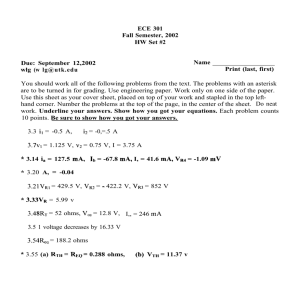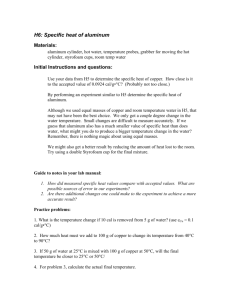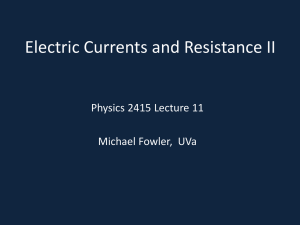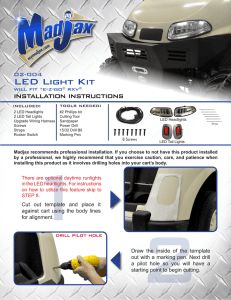Know This…
advertisement
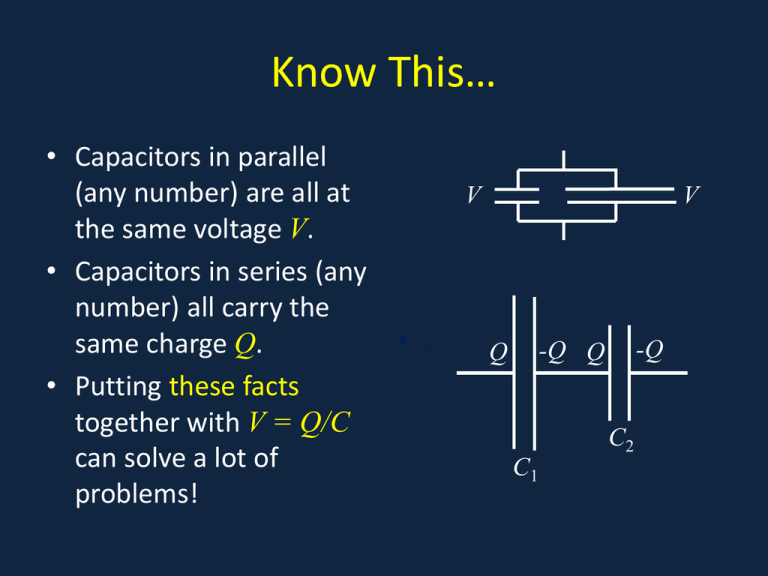
Know This… • Capacitors in parallel (any number) are all at the same voltage V. • Capacitors in series (any number) all carry the same charge Q. • Putting these facts together with V = Q/C can solve a lot of problems! V • . V -Q -Q Q Q C2 C1 Microscopic Picture of Conductivity • The total current down the wire is I; if we assume it’s uniform over the cross section area A (which it is) there is a current density j = I/A. (units: amps/m2) • A constant E field gives a steady current. This means the electrons are bouncing off things, like a sloping pinball machine, otherwise the current would keep accelerating. Question • What is the resistance of a 12V, 36 Watt headlight bulb? A. 3 ohms B. 4 ohms C. 0.3 ohms Answer • What is the resistance of a 12V, 36 Watt headlight bulb? A. 3 ohms B. 4 ohms C. 0.3 ohms • Power of 36W = IV, V = 12 so I = 3. Then I = V/R. Question • Assume the 12V, 36 Watt headlight bulb has a tungsten filament. What is its approximate power output in the first instant it is connected, cold, to the 12V battery? ( T 150 ). A. 36W B. 2.4W C. 540W Answer • Assume the 12V, 36 Watt headlight bulb has a tungsten filament. What is its approximate power output in the first instant it is connected, cold, to the 12V battery? ( T 150 ). A. 36W B. 2.4W C. 540W Power P = IV = V2/R: R when initially cold is 1/15 of R at operating temperature of 3300K. Drift Speed • Take a piece of copper wire, say 1mmx1mm cross section, 1m long carrying 5 amps. • This is 1cc of Cu, about 10 gms, about 1023 conduction electrons (one per atom), about 15,000C of electron charge. • Therefore, at 5 amps (C/sec) it takes 3000secs for an electron to drift 1m. • Bottom line: the drift velocity is of order 10-4 m/sec. (it’s linear in current, and depends on wire thickness for given current, obviously.) Question • The resistivity of aluminum is 58% higher than that of copper. • A copper high voltage line has diameter 1 cm. If is replaced by an aluminum line of the same resistance, the aluminum line has diameter: A. 1.58cm B. 1.26cm C. 0.8 cm D. O.64 cm Answer • The resistivity of aluminum is 58% higher than that of copper. • A copper high voltage line has diameter 1 cm. If is replaced by an aluminum line of the same resistance, the aluminum line has diameter: Remember R = L/A. The A. 1.58cm power lines have the same B. 1.26cm length, the aluminum therefore C. 0.8 cm needs 58% more cross-section area A D. O.64 cm
